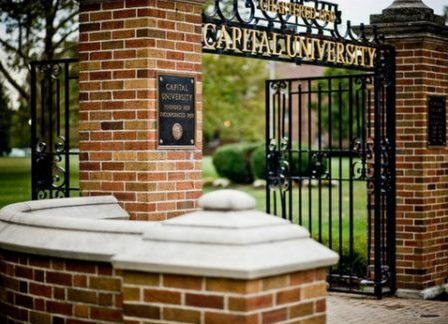College enrollment rates are steadily declining across the country.
National enrollment reached an all time peak in the spring of 2011 and has dropped by over a million students since.
There are many possible explanations for the trend, from tuition cost to inadequate housing options, but the most likely explanation is that there are simply fewer Americans that fit into the traditional college demographic.
The 18 to 24 age group has plateaued in recent years as the United States population continues to grow older. The U.S. Census Bureau predicts enrollment rates across the country will not improve for at least 10 years.
The drop in enrollment has affected many universities, but those with smaller student bodies have been affected the most.
Capital has a current total enrollment of 2,332 students, with 613 first-years.
In the fall 2015 semester, the university welcomed 671 incoming students. That is an 8.64 percent drop in first-year enrollment.
Retention rates have held steady however, with 1,606 returning full-time students. This number was actually higher than the 1,542 that the university had budgeted for.
The university raised tuition and fees by 2 percent for the 2016-17 academic year. The same increase occurred for the 2015-16 academic year.
Seventy-six percent of Capital’s revenue comes from tuition and fees, and these raises were intended to be equal to the respective increases in the total cost of business.
Given the projected continued drop in the national college enrollment rate, the university may face a restricted revenue stream in the years to come.
If the university is unable to stabilize first-year enrollment, administration will have to decide whether to make cuts, further increase tuition, or enter deficit spending.
With the hiring of Jean-Paul Spagnolo as new vice president for strategic enrollment management, it would seem that keeping enrollment rates strong is a goal of the current administration. Spagnolo is expected to assume the position on Nov. 1.
An enrollment summary to be released by the university this week details the areas that have experienced the greatest decline.
Notably, 134 of the incoming first-year students were students of color, which is 22.09% drop from 2015.
Athletics also experienced a drop, with only 150 members of the first-year class participating in a sport, 21.05% less than last year.
While the decline in athletes can be attributed to the hiring of a new football coach, there are still areas in which the university needs to improve socially in order to draw in new students of color, opposing genders, and disabilities.
The university will also have to grapple with a continually diversifying college age population in the coming years.
The U.S. Census Bureau predicts that, by the end of the decade, no single racial or ethnic group will constitute a majority of children under 18. Within three decades, there will be no racial or ethnic majority in any age group.
The U.S. population is also becoming less religious, with more individuals identifying as religiously unaffiliated.
Capital will need to continue to make efforts to be inclusive and representative of all students in order to strengthen enrollment rates and remain viable as an institution.
President Beth Paul attributes the drop in first-year enrollment to a lack of community knowledge about the university’s merits.
“If we don’t do a good job of communicating what is special about Capital, then it’s going to be harder for us to be competitive with other liberal arts schools,” she said.
According to Paul, part of the solution for Capital is to take more initiative during open houses, orientations, and other events that are predominately attended by incoming freshmen.
As this is her first year as Capital’s president, Paul should be able to offer fresh eyes on the situation.
“[There is] a lot of opportunity to tell our story better and more broadly about what it is about this school and community that students and parents can find value in,” Paul said.
The presidents office will release a campus-wide memo this week that will detail an action-plan regarding the decline in enrollment.
A community conversation with Paul Homberg, an enrollment management specialist, is planned for Oct. 26 from 4 to 5:30 p.m. in the Bridge of Learning. The event is open to the public and anyone who is interested in learning more about this phenomenon.

